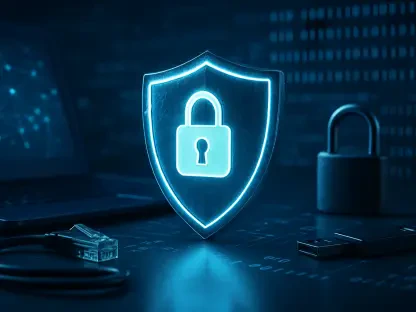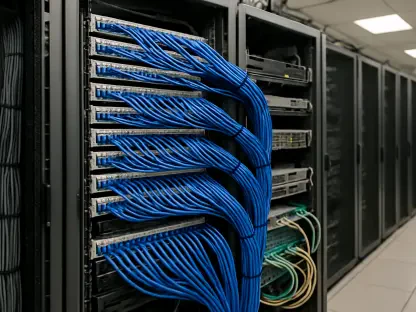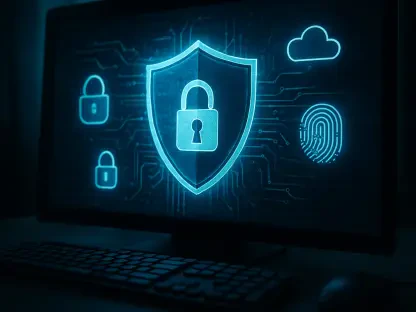In today’s evolving digital landscape, government entities face an ever-growing array of cyber threats that necessitate robust defense mechanisms. Security Information and Event Management (SIEM) and Security Orchestration, Automation, and Response (SOAR) platforms emerge as pivotal tools in this battle, offering comprehensive solutions for anomaly detection and incident response.
Overview of SIEM and SOAR in Government Cybersecurity
SIEM and SOAR technologies are integral to fortifying government cybersecurity measures. Together, these platforms ensure comprehensive data collection and facilitate swift incident responses. SIEM focuses on automating log data collection and analysis from diverse network sources, showcasing its utility in monitoring and detecting potential threats. Meanwhile, SOAR enhances cybersecurity by utilizing predefined playbooks that streamline the incident response process, ensuring continuity in operations. These functionalities are critical for government agencies seeking not just to improve their security posture but also to do so efficiently and effectively.
Guidance from cybersecurity experts aims to demystify the integration of these platforms, dividing its focus across three key publications. These documents address the needs of executives by emphasizing strategic benefits and implementation challenges, while cybersecurity practitioners are equipped with technical guidelines and log prioritization best practices. Although primarily tailored for government use, the recommendations offer valuable insights for any organization striving to elevate its cybersecurity defenses.
Benefits of Implementing SIEM and SOAR Solutions
Adopting SIEM and SOAR platforms offers myriad benefits, underscoring the necessity of best practices. Government entities that invest in these technologies witness a remarkable improvement in their security capabilities, primarily through enhanced threat detection and streamlined incident response processes. Utilizing these platforms leads to increased security efficiency, as automated data collection and predefined playbooks reduce the time and resources traditionally spent on monitoring and responding to incidents.
Moreover, the cost savings associated with the efficient use of SIEM and SOAR cannot be overstated. By optimizing resource allocation and automating routine tasks, government agencies can redirect their focus toward addressing more critical security concerns. This strategic reallocation not only enhances operational efficiency but also contributes to meeting cybersecurity objectives in a manner that is economically sustainable.
Best Practices for Implementing SIEM and SOAR
Implementing SIEM and SOAR platforms involves adhering to specific best practices that ensure optimal performance. These practices are designed to provide government agencies with actionable strategies to maximize the benefits of their cybersecurity investments.
Effective Log Data Collection and Analysis
The cornerstone of any robust SIEM implementation is the efficient collection and analysis of log data. Successful data collection facilitates a comprehensive understanding of network activities and potential threats. Government agencies must prioritize the integration of various data sources to capture a holistic view of their security landscape.
Case studies illustrate how effective log data collection has a transformative impact on an agency’s cybersecurity posture. By integrating logs from multiple sources, agencies are better equipped to identify anomalies early and respond promptly, minimizing the potential damage from cyber threats.
Automating Incident Response through Playbooks
Automating incident response is a critical aspect of SOAR implementation. Predefined playbooks streamline response efforts, allowing teams to act swiftly and decisively during incidents. By automating routine tasks, organizations can minimize human error and respond to threats more quickly.
A notable example of automation’s efficacy is an agency that leveraged SOAR playbooks to enhance its incident response procedures. By automating predetermined actions for common threats, the agency drastically reduced response times and ensured consistent handling of incidents. This not only improved overall security but also freed up resources to address more complex threats.
Conclusion and Recommendations
Drawing from the vast potential of SIEM and SOAR platforms, government agencies gain invaluable insights into their IT ecosystems, enhancing their ability to proactively address cyber threats. These technologies present a paradigm shift in governmental cybersecurity strategies, offering solutions that are both comprehensive and scalable.
Going forward, it is vital for government entities to weigh specific considerations such as budget constraints and organizational objectives. Thorough integration of these technologies necessitates a careful evaluation of the current security infrastructure. The emphasis should be on selecting solutions that seamlessly integrate into existing systems while delivering tangible improvements in security outcomes. This strategic approach ensures that both immediate cybersecurity objectives and long-term operational goals are achieved, fostering an environment where security is not just a priority, but an integral part of the agency’s mission.









